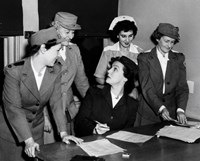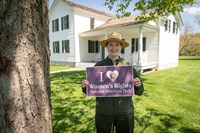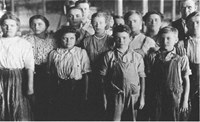- Lesson Plan (549)
- Field Trips (139)
- Distance Learning (105)
- Student Activities (51)
- Traveling Trunk (39)
- Teacher Reference Materials (28)
- Guest Speakers (26)
- Primary Sources (19)
- Other Education Materials (15)
- Field Schools & Institutes (3)
- Online Galleries (3)
- Teacher Workshops & Other Programs (3)
- Media for Loan (1)
- Science Labs (1)
- Fort Scott National Historic Site (28)
- Abraham Lincoln Birthplace National Historical Park (27)
- Fort Necessity National Battlefield (24)
- Bent's Old Fort National Historic Site (21)
- Charles Young Buffalo Soldiers National Monument (20)
- Andersonville National Historic Site (19)
- Gateway Arch National Park (18)
- New Orleans Jazz National Historical Park (18)
- Women's Rights National Historical Park (18)
- Show More ...
- Social Studies (836)
- Literacy and Language Arts (348)
- Science (168)
- Math (52)
Showing 942 results for Women history ...
Women in the American Revolution
- Type: Student Activities
- Grade Levels: Upper Elementary: Third Grade through Fifth Grade
Women had an important role in the Revolution. Complete this student activity to learn more.
Subsistence: Women’s Influence
- Type: Lesson Plan
- Grade Levels: Middle School: Sixth Grade through Eighth Grade
Women of the Military Frontier
Women and the Manhattan Project
Be a Women's Rights Influencer
- Type: Lesson Plan
- Grade Levels: High School: Ninth Grade through Twelfth Grade
Women in the Civil War
Women Who Paved the Way, Exploring Women Homesteaders and Suffragists (Adult)
Women at Floyd Bennett Field
- Type: Teacher Reference Materials
- Grade Levels: Middle School: Sixth Grade through Eighth Grade
Women’s Rights are Human Rights
- Type: Lesson Plan
- Grade Levels: Upper Elementary: Third Grade through Fifth Grade
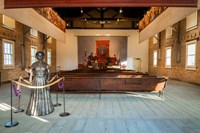
In this series of four lesson plans from the Erie Canalway National Heritage Corridor, students will be able to explore the development and growth of the American women's rights movement. This includes lessons about the Seneca Falls Convention, the Erie Canal, and the later women's rights movement. Developed by educator Lynn Girven of the Rochester City School District.
Women and Children in the Mill Village
- Type: Lesson Plan
- Grade Levels: Upper Elementary: Third Grade through Fifth Grade
Enslaved Women & Revolutionary Resistance
Women in Science at Grand Canyon
Role of Women at the Springfield Armory
- Type: Lesson Plan
- Grade Levels: Middle School: Sixth Grade through Eighth Grade
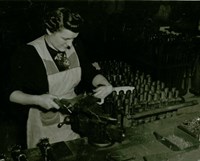
During World War I and World War II, millions of women in the United States entered the workforce to keep industrial production going as male workers left to join the military. Students will analyze photographs and text of a newspaper article to gain a deeper understanding of the contributions of women, whose presence changed how females were viewed as workers. Initially underestimated in their capabilities, women proved to be an integral part of Armory production.
Women Who Paved the Way, Exploring Women Homesteaders and Suffragists (6th - 8th)
- Type: Distance Learning
- Grade Levels: Upper Elementary: Third Grade through Fifth Grade
Women Who Paved the Way, Exploring Women Homesteaders and Suffragists (9th - 12th)
- Type: Distance Learning
- Grade Levels: High School: Ninth Grade through Twelfth Grade
Unsung Patriots: Women at the Battle of Cowpens
- Type: Lesson Plan
- Grade Levels: Middle School: Sixth Grade through Eighth Grade
The student will be able to identify the varied roles of women in the American Revolution.
Why Visit His Home?
Be a Women's Rights Influencer- Middle School Level
- Type: Lesson Plan
- Grade Levels: Middle School: Sixth Grade through Eighth Grade
History on Trial
- Type: Field Trips
- Grade Levels: Middle School: Sixth Grade through Eighth Grade
History Hunters
- Type: Traveling Trunk
- Grade Levels: Upper Elementary: Third Grade through Fifth Grade
This activity trunk is designed to introduce learners to the ways that historians, archeologists, and anthropologists use primary resources to learn about the past. Students will role-play by wearing costumes identifying each as an anthropologist, archeologist, or historian.



